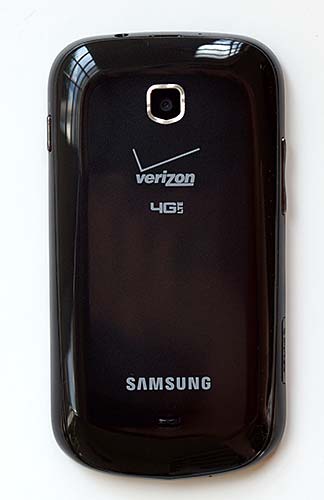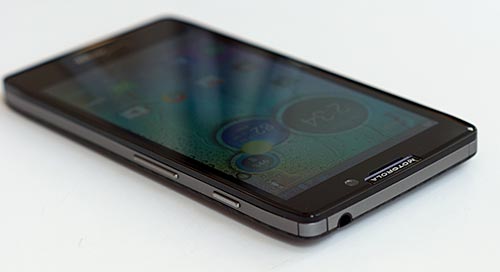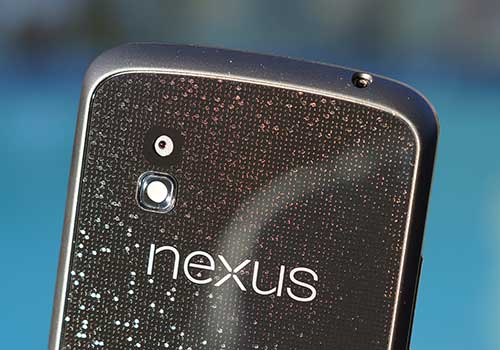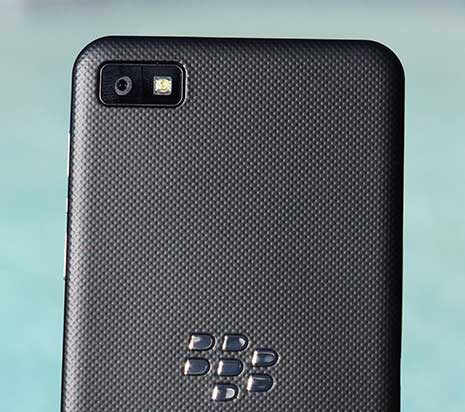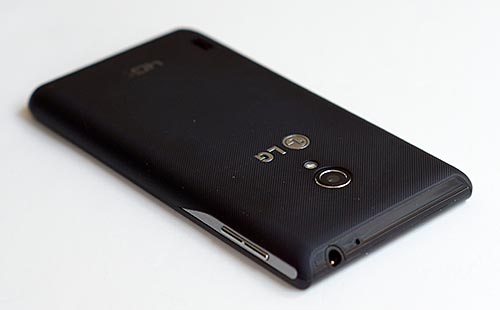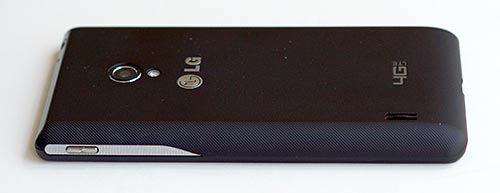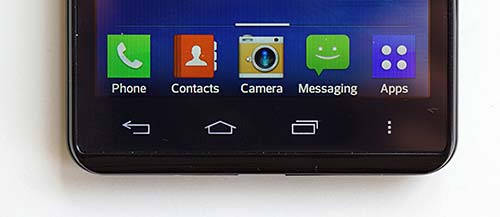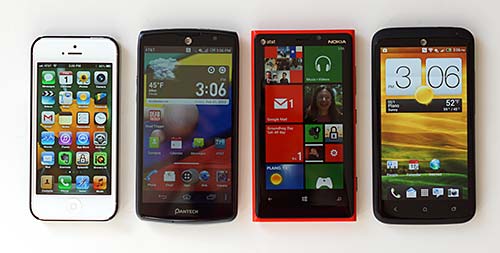There's nothing like the 5.3" Samsung Galaxy Note,
the world's first phablet to achieve mass market success. Available
first overseas at the end of 2011, it made its way to AT&T in the
late winter of 2012 and now it's finally available on T-Mobile US.
What's a phablet? A smartphone that's big enough to be a small tablet.
This Android smartphone has a 5.3", 1280 x 800 Super AMOLED HD display
(the same resolution as most 10.1" Android tablets). No doubt, this is a
big phone in a world where big phones are the trend. But it makes the
4.8" Galaxy S III
look compact and it's not for those with small hands who detest the
march toward larger smartphones. I have large hands and a love of pocket
computers, so the Galaxy Note remains one of my favorite phones of all
time. The large screen is excellent for eBooks, GPS navigation, gaming
and note-taking and sketching with the included S Pen.
The Samsung Galaxy Note will be
available August 8, 2012 on T-Mobile. It's $249 with a 2 year contract
and $599 without contract. It's available only in black.

The Samsung Galaxy Note runs Android OS
4.0.4 with Samsung's TouchWiz software. It has a dual digitizer with
both capacitive touch and a digital pen (included) that's much more
precise than a capacitive stylus. It's slim and light despite its
otherwise large dimensions, so it actually can fit in a roomy pants
pocket. It's refreshing that the phone has a removable battery and a
microSD card slot; two items that have become a casualty of unibody
designs starting with the iPhone.

The Samsung Galaxy Note runs on the same 1.5GHz dual core Qualcomm S3 CPU as the AT&T version,
and other than carrier customizations and the T-Mobile HSPA+ 42Mbps
cellular radio, it's virtually the same as the AT&T version, and
very close to the international version we reviewed in December 2011. So
little has changed that we won't go over every detail in this review:
the Note is a known quantity by now. The phone has dual band WiFi
802.11b/g/n, Bluetooth 3.0 + HS, NFC and a GPS with GLONASS support. It
has a front 2 megapixel camera and a rear 8 megapixel camera with LED
flash and a micro SD card slot.

The Samsung Galaxy Note and Samsung Galaxy S III.
Display
Since Android scales well, the display
is easy to read and text and icons aren't tiny. The phone is actually
very easy on the eyes, and for those who prefer smaller fonts and icons,
you can root the phone and reduce the dpi to 240 or 280 from its
impressively high 320. The very high standard pixel density makes for
very sharp text and images, and that makes up for the Pentile Matrix
that we and other reviewers harp on because it uses fewer sub-pixels
than LCD displays, which can reduce the smoothness of text in lower dpi
displays. Why not use the newer Super AMOLED Plus display that has a
standard RGB pixel arrangement and loses the Pentile Matrix? Samsung
uses Super AMOLED Plus displays on smaller and lower resolution
displays, but technological limitations prevent them from making larger
than 4.5" HD displays using the newer Plus technology. That means both
the Note and Samsung Galaxy S III
smartphones have Super AMOLED HD displays, but the Note looks better
than the S III to my eyes. Samsung went for broke with the Note and it
has better color tuning (whites don't look as blue) and a sharper look
than the slightly lower resolution 4.8" Galaxy S III.
Calling and Data
The T-Mobile Galaxy Note is a quad band
GSM world phone with 3G and 4G HSPA+ 42 Mbps on T-Mobile's bands. Call
quality is very good with full and clear voice on both ends. The
speakerphone has just average volume, which is surprising for such a
large phone where there's more room for an ample speaker (the same is
true of other Galaxy Note variants). Bluetooth worked well in our tests
with a variety of Bluetooth headsets, stereo speakers and a car kit.
There's no need to hold this large phone to your head to make calls.
T-Mobile has excellent service in our
area, and their HSPA+ download speeds rival AT&T and Verizon's LTE
speeds. The Samsung Galaxy Note averaged 17.4 Mbps down and 1.9 Mbs up
according to the Speedtest.net app. The upload speeds are significantly
lower than LTE on the other two carriers because T-Mobile caps upload
speeds to allow for better download speeds (most folks care more about
download speeds).
The phone has WiFi calling for those who
don't want to eat up plan minutes or have weak cellular coverage. The
Mobile Hotspot feature allows you to use the phone as a high speed
wireless modem for notebooks, tablets and other devices. The Note uses a
standard size SIM rather than a micro SIM.
Performance and Horsepower
The T-Mobile Samsung Galaxy Note runs on
the same 1.5GHz Qualcomm Snapdragon S3 CPU with Adreno 220 graphics as
the AT&T model. AT&T had to go with the Qualcomm CPU for LTE
integration, and likewise T-Mobile needed the Qualcomm chipset for HSPA+
42 Mbps and so they couldn't go with the Samsung Exynos dual core CPU
used in the international version. Honestly, performance is fairly close
between the two platforms, so it's not a sticking point.
The S3 is a third generation mobile CPU
that was cutting edge when the first Note variants came out, but S4
fourth generation smartphones hit the market a few months ago (HTC One X, HTC One S and Samsung Galaxy S III)
and that puts the Galaxy Note at a specs disadvantage. In terms of
perceived performance, the phone feels fast enough, with a little bit of
lag when switching between apps when several heavy apps are running
(we've experienced this in the T-Mobile version more than the AT&T
version, so a software update could improve things). In synthetic
benchmarks, the Note puts up a strong showing in AnTuTu and GLBenchmark
graphics tests, but it clearly can't score as high as the newer and
faster S4 as noted in Quadrant. Still, it puts up very good numbers, and
I must say that smartphone CPU speeds are progressing faster than we
can come up with challenges to warrant those speeds. The phone can
handle the latest games like Dead Trigger just fine; no need for a Tegra
3 or Qualcomm S4 to play those well. Likewise, the Note can handle
1080p video playback, Adobe Flash and Netflix perfectly.
S Pen and Apps
The huge display and active Wacom dual
digitizer are the two features that set the Samsung Galaxy Note apart
from other smartphones on the market. The included S Pen that lives in a
convenient silo offers pressure sensitivity and a level of accuracy
that you won't find in a capacitive stylus. Not every app supports
pressure sensitivity, but we found that most drawing, painting and
note-taking apps on the Android market do support the pen, thanks in
part to Android 4.0's much expanded digital pen support. The pen works
with Alias SketchBook Mobile, Quill and other popular apps on the Google
Play Store. And it works with Samsung's own built-in pen aware apps
like S Memo and the new Pro Suite apps like S Note.
S Memo is the light version of S Note,
and it's available as a widget and you can launch it with a double tap
of the pen on the screen (while holding the pen's single button down).
You can jot notes, insert images and audio and use the on-screen
keyboard with S Memo. S Note and S Memo are among Samsung's "Premium
Apps", and S Note adds handwriting recognition and formula recognition.
The formula recognition works very well and the handwriting recognition
is decent but not as good as that of the Lenovo ThinkPad Tablet (a 10.1" Android tablet with a digital pen) or Windows 7 tablets. Watch our video review to see it in action.
Artists will appreciate the Note and
pen: it's like having a pocket sketchbook. S Note supports pressure
sensitivity and you can select line width and colors--enough to turn out
some pretty compelling sketches. For non-artists, S Note is handy for
diagraming and it can even straighten geometrical figures so those
circles are round and rectangles tidy.
The S Pen works with Adobe Reader for
highlighting, underlining and crossing out text. You can use the digital
signature feature to sign contracts and agreements without resorting to
pen, paper and a fax machine. You can also save screen shots of any app
(press and hold on the screen using the pen while depressing its
button) and mark up the screen shot to your heart's content: web pages,
Word documents and photos are your playground.
Samsung's TouchWiz UI runs roughshod
over Android Ice Cream Sandwich, making it look and act more like 2.3
Gingberbread in terms of UI. For once we won't complain much, because Samsung's customizations and apps work in harmony with the extra-large
display and bring value. The tweaks and additions make the Note a better
tool, rather than sometimes seeming like software for the sake of
software on the Galaxy Note.
Battery Life
The T-Mobile version of the Samsung
Galaxy Note ships with the same 2500 mAh Lithium Ion battery as other
variants. That's a very large capacity battery, but the smartphone's
large display needs the extra power. That means the Note will last as
long as other current high end Android smartphones, but not
significantly longer. In our tests, we managed a full day on a charge
with moderate use. Long gaming sessions, GPS navigation and lots of
streaming video will consume battery more quickly. Third parties like
Mugen offer extended batteries that work well for those who want a
beefier battery, or you can buy a standard spare battery if you spend
lots of time on the road away from power. You can read our Mugen Samsung Galaxy Note Extended battery review here.
Camera
The Samsung Note uses the same 8 megapixel rear main camera module as the Galaxy S II,
and it takes colorful and sharp photos as well as pleasing though not
groundbreaking 1080p video. The camera is prone to overexposure in high
contrast brightly lit outdoor settings, just as with the S II, but
otherwise we have no complaints. Indoor photos show relatively little
noise, and the flash doesn't overexpose subjects at close range. 1080p
video looks smooth at 30fps, and has a good amount of detail and color
saturation, though there's some motion blockiness typical of camera
phones. The 2 megapixel front camera worked well with Google Talk video
chat and Skype in our tests. We looked clear with good illumination over
HSPA+ and WiFi. The rear camera isn't as sharp as the HTC One S and Samsung Galaxy S III with their next generation internals and BSI sensor, but it's still a solid camera.









